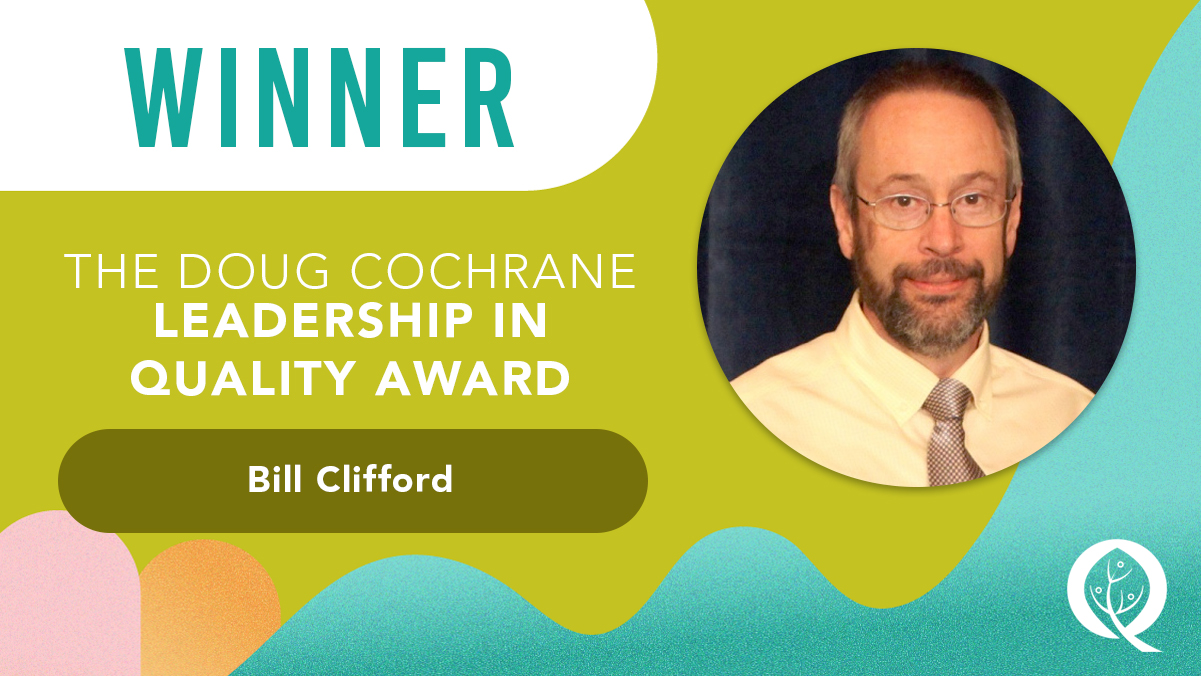- 2023
|
- Winner
|
- Leadership in Quality
The seeds of the electronic medical records system that has supported BC physicians since the early 1990s were actually sown in New Brunswick.
Bill Clifford began his professional life with the New Brunswick Department of Natural Resources, working on one of Canada’s first large-scale digital mapping systems, and a simulation model for determining sustainable yield from forest harvesting. But Bill’s true passion was rooted in medicine – he became a primary care physician, landing in Prince George in 1989 via stops in Manitoba and Clearwater, and bringing his considerable IT skills with him.
Described by colleagues as a visionary leader, innovator, mentor, genius, and one-half physician/one-half IT techie, Bill is also the cultivator of the health information technology that physicians across BC are using today to improve patient care – a user-friendly, electronic medical record (EMR) system called the Medical Office Information System (MOIS), which he launched in 1990.
Bill’s leadership and inspirational efforts to harness the power of IT technology for health care purposes has enabled innumerable physicians, medical residents, and health care providers to deliver high-quality longitudinal care to their patients throughout northern BC and beyond.
“He comes with a very practical approach, knowing that to make improvements you need to measure,” says Dr. Bruce Hobson, retired family practitioner and Medical Director for Program Standards at UBC, Continuing Professional Development. “He can leverage technology and data to help inform what’s going on in health, identify gaps, and then support the measurement of any change to see if the change results in improvement.”
It’s for this leadership that Bill was awarded the Order of BC in 2014. Now retired as Chief Medical Information Officer for Northern Health (NH), he works as a primary care and informatics consultant, focusing on physician remuneration, patient-centred medical homes, primary care networks and information sharing for quality improvement and research.
He’s still making a positive impact for patients – just like he did when beginning his practice in Prince George. Then, he saw that software could help organize medical information so it could be used in a meaningful way to improve patient care. That led him to develop and field-test MOIS.
Bill shared it with interested colleagues and continued to develop and improve the product through input from primary care physicians, nurses, social workers, medical office assistants, and technicians. Slowly, as more people began using MOIS in their practices, he began seeing an improved standard of patient care in the north thanks to key features such as: streamlined medical office operations; documentation of patient medical records; coordinated care with referrals and linkages between family physicians, specialists, and other parts of the health care system; prompts for timely screening, prevention, and follow-up; and, reciprocal support and resource sharing amongst fellow MOIS users.
“The magic of this EMR is how simple it is to use the program to provide guideline-based care to patients, to run reports on what is needed to ensure patients are receiving the care they need, and to find patients whose care needs more intervention,” says Dr. Paul Murray, retired NH Medical Lead for Primary and Community Care. “The long and the short of it, Bill created MOIS and it’s made my life easier.”
By the early 2000s, MOIS was embedded in northern medical practices, and it ranked as the No. 1 medical record system in Canada. Demand for the program eventually surpassed Bill’s ability to support it in the customer-focused way he preferred, so in 2007 he transferred ownership of the application for $1 to a not-for-profit organization he’d founded – Applied Informatics for Health Society (AIHS), now known as Bright Health. He continued providing expert advice on MOIS as a board member of the Prince George Division of Family Practice, and as NH’s Chief Medical Information Officer.
He also began collaborating on the Emergency Department Information System (EDIS), a software application based on the MOIS model, and helped found Aggregated Metrics for Clinical Analysis, Research and Evaluation (AMCARE), a web-based automated and standards-based practice data collector system. By 2010, almost every MOIS-using practice in the region, from Stewart and Haida Gwaii to Fort St. John and Valemount, was connected and sharing primary care data.
In order to connect with the rest of BC, Clifford and his collaborators expanded the scope of AMCARE through the creation of a Division of Family Practice initiative that led to the BC Physician Data Collaborative. In 2016, that group merged with AMCARE to form the Health Data Coalition (HDC), a physician-led network for the collaborative use of aggregated clinical data.
Candice Manahan, NH Regional Director, Physician Quality, Engagement and Education, says one of his key traits as a visionary leader is that he could always see the future potential for health care.
“He had ideas that we couldn’t even fathom…(and) he was planting seeds in us,” she says. “He was never the one to take credit for all these amazing things he created and developed – he’s very humble. He helped us think much bigger, much broader and he provided us with support. He continuously reminded us that we could do better, that we could do more.”


